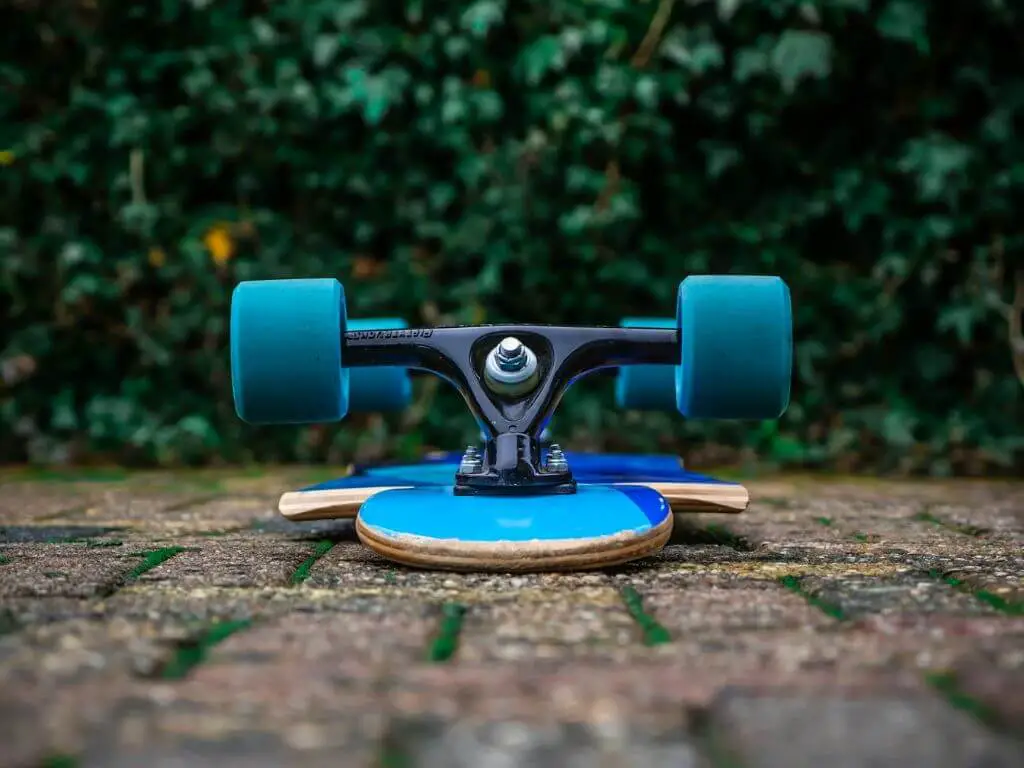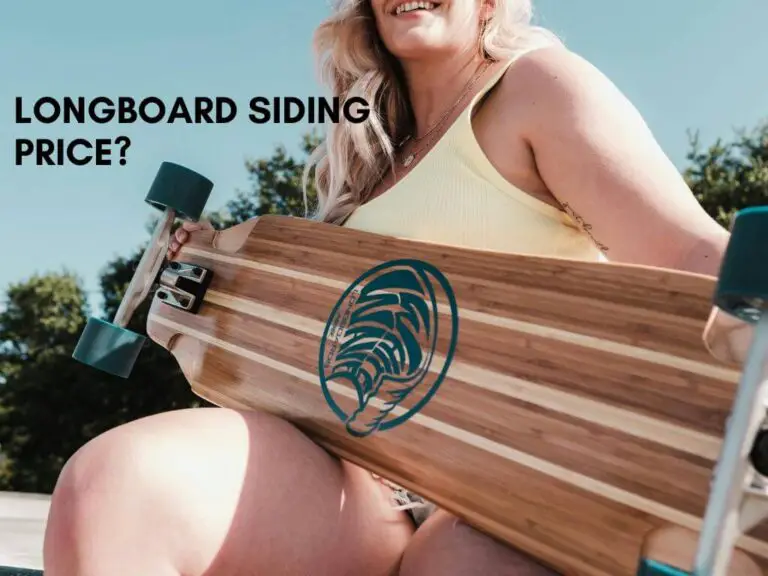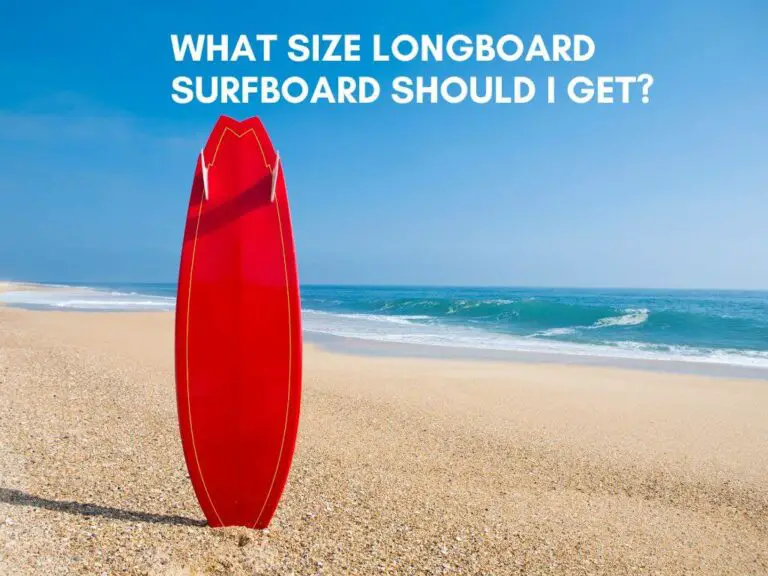Ever cruised down a smooth path and felt that incredible sense of freedom that only longboarding can provide? It’s pure magic! But like any good adventure, your longboarding experience depends on having the right gear. And wheels? They’re pretty darn important. They affect your grip, stability, and overall riding experience. But how long do these little guys actually last?
This guide dives deep into the world of longboard wheels, exploring the factors that affect their lifespan and how to keep them rolling for as long as possible. By the end, you’ll be a wheel-wearing pro, ready to conquer countless miles of pavement (or maybe even break that distance pushing record – who knows?). So, grab your board, let’s get rolling!
Average Lifespan of Longboard Wheels
The average lifespan of longboard wheels can vary depending on various factors, including the make, quality, and usage. Professional skaters often opt for high-quality wheels that not only last longer but also come at a higher price point. These wheels, typically made from urethane with a higher durometer, can withstand intense skateboarding sessions and provide excellent performance.
On average, a set of longboard wheels can last around two months with constant use for professional skaters. However, for non-professionals who skate less frequently, the lifespan can extend to six months or even more. It’s important to note that these estimates are approximate and can vary based on individual riding styles, terrain conditions, and maintenance practices.
“If properly maintained, your longboard will feel the same as the first day you ever used it.” – Skate Guiders
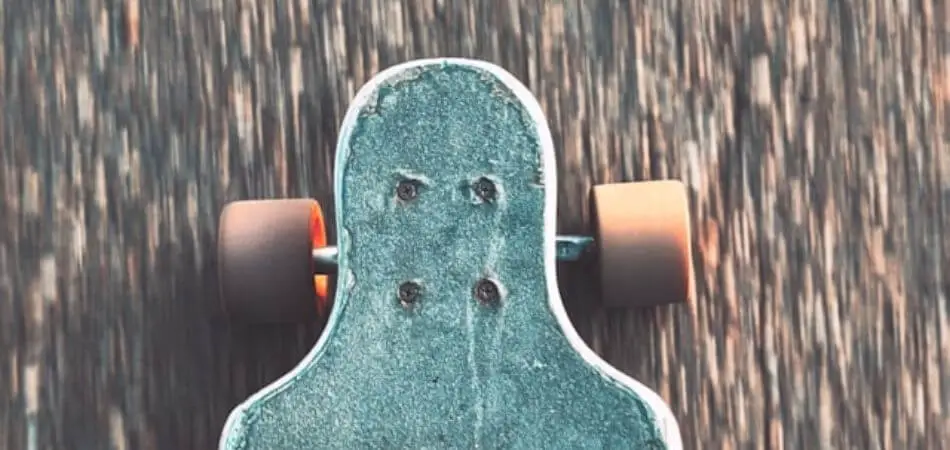
Factors Affecting Longboard Wheel Lifespan
Imagine this: you’re carving down a hill, wind whipping through your hair, and suddenly – a flat spot on your wheel throws you off balance. Not exactly the smoothest ride, right? Well, worn-out wheels can definitely put a damper on your longboarding fun.
Here’s the thing: how long your longboard wheels last isn’t a one-size-fits-all answer. Several factors come into play, influencing how quickly they wear down. Let’s explore the main culprits:
- Wheel Material (Durometer): Your wheels are most likely made of urethane, a super versatile material. But within urethane lies a secret weapon – durometer! This fancy term basically refers to the hardness of the wheel. Softer wheels (think around 75a durometer) offer amazing grip, perfect for cruising and carving. However, the trade-off is that they wear down faster. Conversely, harder wheels (around 85a and above) are more slide-friendly and last longer, but they might not grip as well on smooth surfaces.
- Riding Style: How you ride your board plays a huge role in wheel wear. Here’s a breakdown:
- Cruising/Carving: Gentle riders who love smooth paths can expect their wheels to last longer.
- Downhill/Freeride: Get ready for some serious wear! Aggressive maneuvers and frequent slides will eat away at your wheels faster.
- Distance Pumping: Pushing yourself for long distances can cause flat spots on your wheels if you don’t rotate them regularly.
We’ll delve deeper into rotation techniques later, but for now, just remember: your riding style significantly impacts your wheel lifespan.
- Wheel Bites
Wheel bites occur when the longboard’s wheels clip the board, causing it to suddenly stop. This can be dangerous and lead to falls or damage to your board. The risk of wheel bites increases at higher speeds or when executing sharp turns. To minimize the chances of wheel bites, it’s important to turn at speeds that allow for easy recovery from a bad turn and avoid excessive weight distribution on the edges of the wheels.
“Avoid wheel bites by only turning at speeds where you can still easily recover from a bad turn.” – Skate Guiders
How Surfaces Impact Your Wheels
Imagine cruising down a silky-smooth path versus tackling a rough, pebble-strewn road. It’s pretty obvious which one will be kinder to your wheels, right? Here’s how the terrain you conquer affects your longboard wheels:
- Smooth Pavement: This is the dream scenario for your wheels. Smooth surfaces offer minimal resistance, minimizing wear and tear.
- Rough Surfaces: Get ready for a faster breakdown. Uneven terrain like gravel, dirt paths, or skateparks will grind down your wheels quicker due to the increased friction.
- Beware the Elements: Water and extreme heat can also take a toll on your wheels. Water can cause the urethane to break down over time, while intense heat can make them softer and wear down faster.
Remember, even the smoothest path won’t guarantee eternal wheel life. But by being mindful of the terrain you ride on, you can extend their lifespan and keep those longboarding adventures rolling.
Coming up next, we’ll tackle another key factor: your own weight and how it impacts your wheels!
How Your Rider Weight Affects Wheels
Let’s face it, longboarding is for everyone, regardless of size or weight. But did you know your weight can also play a role in how long your wheels last? Here’s the simple science:
- More Weight, More Wear: Heavier riders naturally put more stress on their wheels. This increased pressure can lead to faster wear and tear compared to lighter riders.
However, don’t let this discourage you! There are still ways to maximize your wheel life, even if you’re a heavier rider. We’ll explore those tips in a bit.
In the meantime, remember: understanding how your weight affects your wheels is just another piece of the puzzle when it comes to maximizing their lifespan.
Now, let’s shift gears and talk about a crucial practice that can significantly extend the life of your wheels – rotation!

Keeping Your Wheels Rolling Smoothly
Imagine your favorite pair of shoes. If you only wear one at a time, the single shoe will wear out much faster, right? The same principle applies to your longboard wheels! This is where the magic of rotation comes in.
What is Wheel Rotation?
Wheel rotation is the practice of regularly switching the positions of your wheels on your board. This helps distribute wear and tear more evenly, ensuring all your wheels wear down at a similar rate.
How to Rotate Your Wheels:
There are different wheel rotation patterns, but a common and effective one is the X-pattern. Here’s how it works:
- Loosen the axle nuts on all four wheels.
- Take off one wheel.
- Move the wheel diagonally across the board to the opposite side. (For example, the front left wheel goes to the back right position.)
- Repeat steps 2 and 3 for all four wheels.
- Tighten the axle nuts on all the wheels, ensuring they’re snug but not over-tightened.
How Often Should You Rotate?
There’s no one-size-fits-all answer, but a good rule of thumb is to rotate your wheels every few rides, especially if you’re a frequent rider or tackle challenging terrain. You can also visually inspect your wheels for uneven wear and rotate them accordingly.
The Rotation Revolution:
By incorporating wheel rotation into your routine, you’ll be surprised at how much longer your wheels last. It’s a simple yet effective practice that keeps your board rolling smoothly and saves you money in the long run.
Now that you’ve unlocked the secrets of rotation, we’ll explore some additional tips and tricks to maximize your longboard wheel life in the next section!
Top Tips for Maximizing Longboard Wheel Life
So far, you’ve learned about the various factors affecting your longboard wheel lifespan. Now, it’s time to put that knowledge into action! Here are some top tips to help you get the most out of your wheels:
- Embrace the Rotation Revolution: Remember the magic of wheel rotation we discussed earlier? Make it a habit! Regularly rotating your wheels ensures even wear and tear, extending their lifespan significantly.
- Choose the Right Wheels for Your Style: Don’t try to be a jack-of-all-trades with your wheels. Opt for softer, grippier wheels for cruising and carving, while harder wheels are better suited for downhill and freeride styles with frequent slides.
- Mind Your Maneuvers: While aggressive riding and slides are undeniably fun, they also wear down your wheels faster. If you’re aiming for maximum lifespan, consider practicing on smoother surfaces and minimizing harsh maneuvers.
- Slide Like a Pro (if applicable): For those who love to slide, mastering proper sliding techniques can actually help minimize wear. This is because controlled slides distribute wear more evenly compared to uncontrolled stops.
- Cleanliness is Key: Dirt and debris can cause uneven wear on your wheels. Regularly clean your wheels with a damp cloth to remove any grime or pebbles lodged in the urethane.
- Store it Right: When you’re not shredding the pavement, store your longboard in a cool, dry place away from direct sunlight or extreme heat. These elements can break down the urethane over time.
By following these tips, you’ll become a wheel-savvy longboarder, maximizing the lifespan of your wheels and keeping the good times rolling for longer.
Up next, we’ll unveil the telltale signs that your wheels are nearing the end of their journey, so you can replace them before they compromise your ride.
Warning Signs: Wheels Are Saying “Sayonara”
Imagine this: you’re cruising along, feeling the wind in your hair, when suddenly your board jolts and throws you off balance. It could be a sign your wheels are screaming for a replacement! Here are the key indicators your longboard wheels have reached their limit:
- Uneven Wear and Flat Spots: This is a classic sign. As wheels wear down unevenly, they can develop flat spots on the urethane. These flat spots disrupt the smooth roll of your board and can lead to wobbles or sudden stops.
- Significant Reduction in Diameter: Over time, the diameter of your wheels will naturally decrease due to wear. However, a drastic reduction is a red flag. Smaller wheels not only affect your rolling efficiency but can also make your board more susceptible to wheel bite (when the wheels rub against the deck during sharp turns).
- Chunks Missing from the Urethane: This one’s pretty straightforward. If your wheels have noticeable chunks missing from the urethane, it’s a safety hazard. Missing chunks can cause unpredictable wobbles and compromise your control.
- Loss of Grip or Performance: Do you feel like your board is slipping and sliding more than usual? Or maybe it just doesn’t feel as responsive as it used to? This could indicate your wheels have lost some of their grip due to wear.
Remember, these signs don’t necessarily mean you have to replace your wheels immediately. But they are a good indication that it’s time to start thinking about replacements. By being aware of these warning signs, you can avoid a sudden breakdown and ensure a safe and enjoyable longboarding experience.
Coming up next, we’ll wrap things up by offering some final thoughts and encouraging you to share your longboarding experiences!
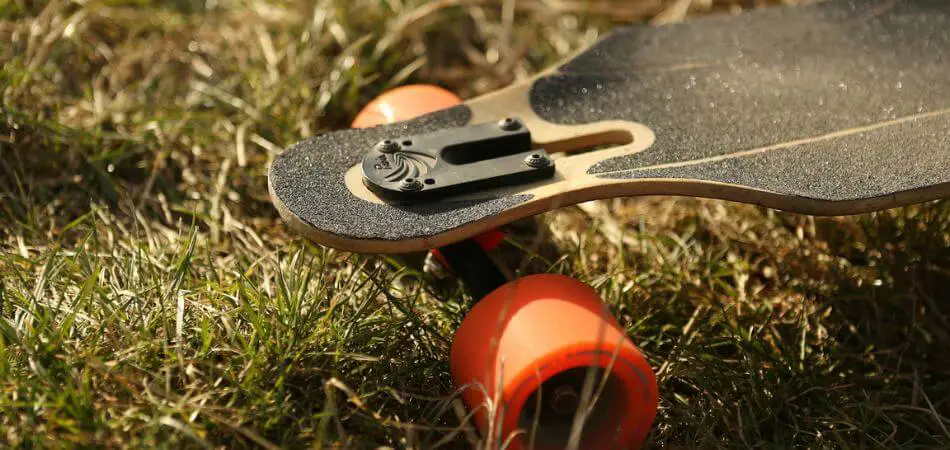
Tips to Buy Longboard Wheels
Choosing the right longboard wheels can greatly impact your riding experience. With numerous options available in the market, it’s essential to consider certain factors before making a purchase. Here are some tips to help you buy the perfect longboard wheels:
Choosing the Right Hardness
The hardness of longboard wheels, measured using the durometer scale, should align with your riding style and preferences. Harder wheels provide faster roll speed over smooth surfaces but may compromise grip and stability. Softer wheels offer excellent grip and stability, making them ideal for rough surfaces, but they may wear down faster. Consider your riding style, the type of terrain you frequent, and personal preference when selecting the hardness of your wheels.
Considering Wheel Shape
Longboard wheels come in various shapes, including conical, cylindrical, square-cornered, and rounded-cornered. Each shape offers distinct characteristics and performance attributes. Conical/cylindrical-shaped wheels provide enhanced grip and slide easily on smooth surfaces but may wear down faster. Square-cornered and rounded-cornered wheels are versatile and suitable for various riding styles, offering durability and stability.
Exploring Different Core Types
Longboard wheels can feature various core types, each offering unique benefits. Normal cores, though less common, provide faster roll speed and increased durability compared to regular plastic cores. Two-piece cores offer a combination of soft and hard materials, providing smooth rolling and resistance to flat spots caused by rocks or debris. Triple-layer cores offer similar advantages to two-piece cores but with an extra layer of durability. Hollow cores are lighter due to their hollowed-out design.
Additional Information: Realistic Expectations
While understanding the factors that affect the lifespan of longboard wheels is important, it’s crucial to set realistic expectations. The average lifespan estimates provided earlier serve as general guidelines, but individual experiences may vary. Factors such as riding style, terrain conditions, wheel hardness, and maintenance practices can significantly influence the lifespan of your wheels.
By adopting proper maintenance routines, avoiding extreme conditions, and selecting high-quality wheels suited to your riding style, you can maximize the lifespan of your longboard wheels. However, it’s essential to monitor their condition regularly and replace worn-out wheels when necessary to ensure optimal safety and performance.
The Final Ride: Wrapping Up
So, there you have it! You’re now equipped with the knowledge to maximize the lifespan of your longboard wheels. Remember, understanding the factors affecting wear and tear, along with implementing the tips and tricks we discussed, will keep you rolling for miles (or maybe even kilometers, for our international shredders out there!).
Frequently Asked Questions (FAQ)
How many miles do longboard wheels last?
There’s no one-size-fits-all answer! Wheel lifespan depends on factors like riding style, terrain, weight, and maintenance practices. The ranges mentioned in the article (e.g., 100-1000 miles) are a starting point.
How do I make longboard wheels last longer?
Rotate your wheels regularly: This distributes wear and tear evenly.
Choose the right wheels for your style: Softer wheels for cruising/carving, harder wheels for downhill/freeride.
Mind your maneuvers: Avoid harsh braking and frequent slides if maximizing lifespan is your goal.
Clean your wheels: Remove dirt and debris that can cause uneven wear.
Store your board properly: Avoid extreme heat or sun exposure.
What are signs my longboard wheels need replacing?
Uneven wear or flat spots
Significant reduction in diameter
Chunks missing from the urethane
Loss of grip or performance
Do softer or harder wheels last longer?
Softer wheels (grippier) wear down faster, while harder wheels (slide better) wear down slower. However, both can lose grip over time.

